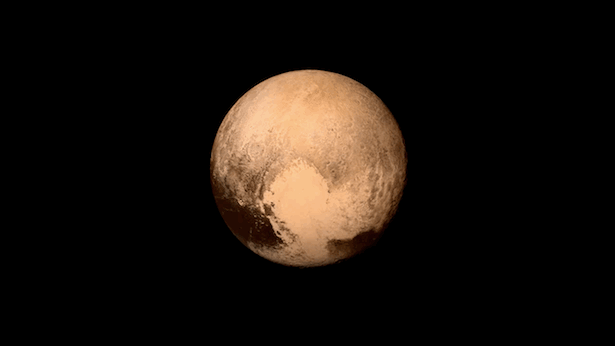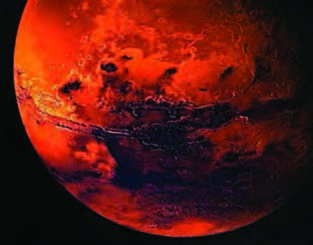
WASHINGTON (TIP): In a discovery that points to exciting geological activity on a distant cold planet billions of miles from Earth, #NASA scientists have discovered that the icy surface of Pluto’s “heart” is being constantly renewed by a process called convection that replaces older surface ice with fresher material.
The prime attraction in the photos of Pluto sent by Nasa’s New Horizon spacecraft during its July 2015 flyby was its heart — a large plain informally known as Sputnik Planum .
Combining computer models with topographic and compositional data gathered by the mission last summer, the scientists showed that the surface of Sputnik Planum is covered with icy, churning, convective “cells” 16 to 48km across, and less than one million years old.
The findings offer additional insight into the unusual and highly active geology on Pluto and, perhaps, other bodies like it on the outskirts of the solar system.
“For the first time, we can really determine what these strange welts of the icy surface of Pluto really are,” said lead researcher William McKinnon from Washington University in St Louis.
“We found evidence that even on a distant cold planet billions of miles from Earth, there is sufficient energy for vigorous geological activity, as long as you have ‘the right stuff,’ meaning something as soft and pliable as solid nitrogen,” noted McKinnon, who is co-investigator on the New Horizons science team.
The study was published in the journal Nature. McKinnon and colleagues believe the pattern of these cells stems from the slow thermal convection of the nitrogen-dominated ices that fill Sputnik Planum.
A reservoir that is likely several miles deep in some places, the solid nitrogen is warmed by Pluto’s modest internal heat, becomes buoyant and rises up in great blobs — like a lava lamp — before cooling off and sinking again to renew the cycle.
The computer models showed that ice need only be a few miles deep for this process to occur, and that the convection cells are very broad.
These convective surface motions average only a few centimetres a year — about as fast as your fingernails grow — which means cells recycle their surfaces every 500,000 years or so. While slow on human clocks, it is a fast clip on geological timescales, the researchers said.
“This activity probably helps support Pluto’s atmosphere by continually refreshing the surface of ‘the heart,'” McKinnon said.
“It wouldn’t surprise us to see this process on other dwarf planets in the Kuiper Belt,” he added.
New Horizons flew through the Pluto system on July 14, 2015, making the first close observations of Pluto and its family of five moons.





Be the first to comment